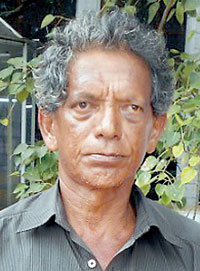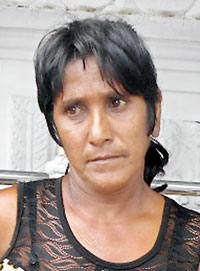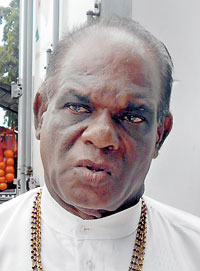News
After the tsunami, wave of official apathy throws public fair vendors into the street
It has been 13 years since the tsunami devastated the coastal town of Galle where the public fair building was one of the structures destroyed in the catastrophe, but it is yet to see any rehabilitation with the valuable public property remaining as a monument to official apathy.
Prior to the 2004 disaster, more than 350 vendors had a flourishing business at the public fair, better known among the locals as ‘Mahajana Pola’; but most of them have now been reduced to hawkers, B. G. Lionel, chairman of the Galle Mahajana Pola Eksath Welanda Sangamaya, said.
“Before the tsunami, the public fair was the main trade centre in the Galle town. When the tsunami hit the area, several people in the market were killed,” he said
He said the authorities later built two temporary markets at Kekiribokke and Orappuwalla, but the two facilities had only 150 stalls in total.
Although some of the traders who were doing business at the tsunami-destroyed market were given stalls, a majority of them were given to people with political connections. Some of them were not even traders, Mr. Lionel said, adding that he was one of the unfortunate traders who did not get a stall.
“I had a two-storeyed house, but I lost everything, my house, my stall,” he said.
The trader said he represented about 100 traders who did not get stalls and their complaints to the authorities had fallen on deaf ears. “The tsunami not only destroyed our properties but dragged us to the streets also. To feed our families, we now sell goods on the street, but the police and the Municipal authorities often chase us away,” he said.
Mr. Lionel said the old market place was a valuable public property and the land was ideal for a shopping complex complete with a market for them to resume their livelihood; public toilets, which the town lacks, and a vehicle park — another facility the town badly needs.
P.V. Padmawathie of Meemana Kurunduwatta was a fruit seller at the public market. She had been in the business, since 1962. She lost ten family members in the tsunami — her husband, her daughter, her son-in-law, her daughter’s mother-in-law and six children of one of her sons. They were living in six houses and all of them were destroyed.
Narrating her traumatic experience, she said, “I had a fruit stall. It was destroyed in the tsunami. When I was carried away by the surging waves, I managed to cling on to a branch of a tree and save my life. One of my daughters also saved her life in the same way. Of the 10 family members we lost, we found the bodies of only three people.”

Dayarathna
Today, she sells fruits on the street. She was among those people who did not get a stall in the new markets.
We went to the makeshift market at Kekiribokke and met trader K.N.W. Meththananda. He said he had a stall at the tsunami-destroyed market, and was fortunate to get a stall at the temporary market 13 years ago. He said the authorities told him that the Kekiribokke market was only a temporary arrangement until they built a permanent market complex close to the police barrier.
Pointing at the decaying wooden planks in his stall, he said this market had few facilities and he often repaired the stall himself. He said the stalls were small and the facility had no toilets.
The temporary market built on the National Housing Development Authority land had some 48 stalls, but Mr. Meththananda said only some eight stalls had good business. Some of those people who got stalls here did not have a stall at the tsunami-destroyed market. Some politically connected businessmen who got stalls had rented them out to others.
He said the authorities should rebuild the old public fair and give their stalls back to them.

Chandralatha
We also met D. Nimal Pathirana, who had a record bar at the old public fair. Now, in the temporary market, occupying a 10 by ten feet dilapidated stall, he tries to sell musical disks, but rarely does a customer walk in.
We spoke to Galle’s formerMayor Methsiri de Silva, the third Mayor after the tsunami. He said that during his tenure he rehabilitated the Central Bus Stand, the Dharmapala Garden, the Beach Garden, the fish market and several roads. He said that the temporary facilities at Kekiribokke and Orrappuwatta were built to let the vendors to resume their business.
When asked about the allegations that some people were renting the stalls out to outsiders, the former mayor said that he had taken action to remove them. “But with the blessings of some politicians, some are doing a flourishing business there. I took over some stalls from vendors because they had not paid taxes. But later some councilors had distributed them among people close to them,” Mr. de Silva said.

Former Mayor Methsiri

Lionel

Meththananda

